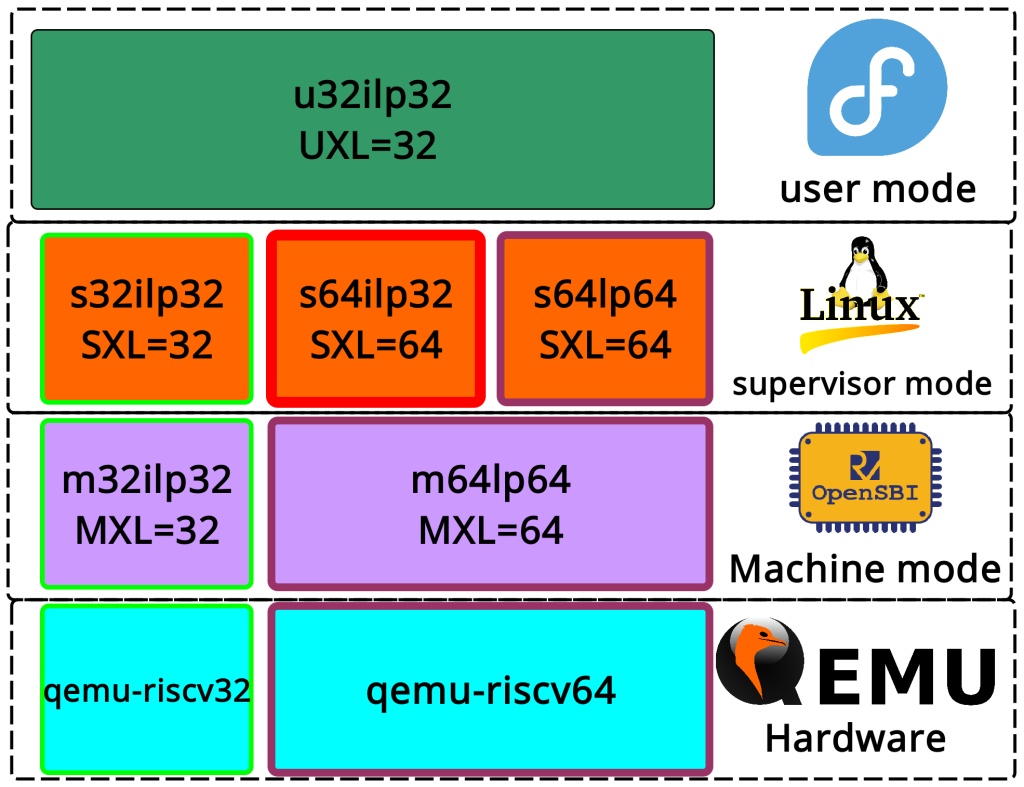Why 32-bit Linux?
The motivation for using a 32-bit Linux kernel is to reduce memory footprint and meet the small capacity of DDR & cache requirement .(e.g., 64/128MB SIP SoC).
The size of ilp32's long & pointer is just half of lp64's (rv64 default abi - longs and pointers are all 64-bit). This significant difference in data type causes different memory & cache footprint costs. Here is the comparison measurement between s32ilp32, s64ilp32, and s64lp64 in the same 128MB qemu system environment:
Rootfs:
- u32ilp32 - Using the same 32-bit userspace rootfs.ext2 (UXL=32) binary from buildroot 2023.02-rc3, qemu_riscv32_virt_defconfig
Linux:
- s32ilp32 - Linux version 6.3.0-rc1 (124MB) rv32_defconfig:
$(Q)$(MAKE) -f $(srctree)/Makefile defconfig 32-bit.config
- s64lp64 - Linux version 6.3.0-rc1 (126MB) defconfig:
$(Q)$(MAKE) -f $(srctree)/Makefile defconfig
- s64ilp32 - Linux version 6.3.0-rc1 (126MB) rv64ilp32_defconfig:
$(Q)$(MAKE) -f $(srctree)/Makefile defconfig 64ilp32.config
Opensbi:
- m64lp64 - (2MB) OpenSBI v1.2-80-g4b28afc98bbe
- m32ilp32 - (4MB) OpenSBI v1.2-80-g4b28afc98bbe

